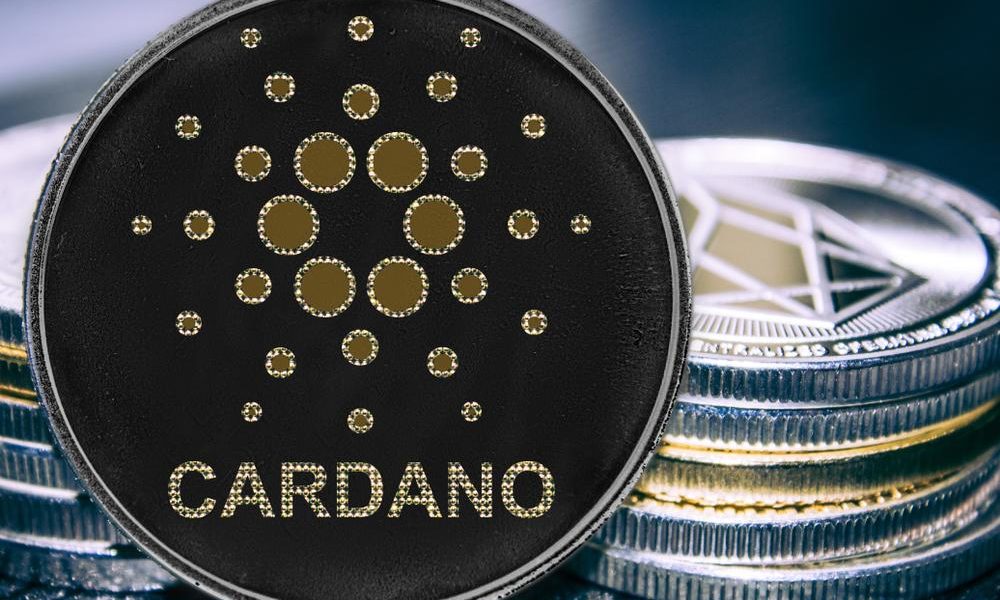- The Cardano ecosystem has enabled a total transaction of 40,604,925 and has 24.77b total ADA staked as of publication.
- At the time of press, ADA is trading around $ 0.435341 and the market cap stands at $16,663,499,930.
Sept. 12, 2021, marked a new dawn for the Cardano (ADA) blockchain with the launch of the Alonzo upgrade. Within five days, the network reported over 200 smart contracts on the network. And as January drew to a close, Cardano’s blockchain load reached a peak of 94.94 percent, signifying high network activity.
To tackle the high traffic, Cardano proposed the Hydra upgrade to boost off-chain scalability. Additionally, the network allocated hundreds of millions of dollars in funding to support DeFi and NFTs on the network.
Early this year, Cardano became the best blockchain in terms of developer activity. The network appealed to users so much that it came up as the next best alternative to DeFi and NFT king Ethereum.
Read More: “We want Cardano” – ADA wins Vitalik Buterin’s Twitter poll for the best Ether alternative
“Cardano will go to zero!”
Naturally, the championed Ethereum killer did not fall short of criticism. The most recent of such blows came from the popular crypto commentator, Ran Neuner. The YouTuber made a video titled “73 percent of These Altcoins Will Go To Zero!”, and Cardano made the list.
In what he calls “the most controversial show of the century,” Neuner claims the ADA token is “shilled.” He reasons that Cardano’s DEXs, including SundaeSwap, cannot handle “fast transactions today with reasonable volume.”
https://mobile.twitter.com/crypto_banter/status/1522210916460371968
Cardano founder Charles Hoskinson, as he has done multiple times before, once again came to the defense of the network. He asked that users spam the thread with “screenshots of live DEX transactions,” angrily adding:
What the hell are you talking about? Dexes on Cardano are handling more load today than at the launch of Sundaeswap and settlement time is sub-minute. Wingriders in particular are running extremely fast. You’re spreading misinformation. I don’t know why. But you are.
Cardano Smart Contracts criticized
Of note, after implementing smart contract functionality, several users claimed various faults with Cardano’s DApps. SundaeSwap was the very first DApp to launch on Cardano, and its users reported encountering transaction difficulties.
Soon after, the issues were linked to network congestion. SundaeSwap’s CEO Mateen Motavaf specifically stated that Cardano was experiencing a heavy workload. The DEX also published a blog highlighting what it called misconceptions:
Cardano is flawed because it only allows 1 transaction per block, only one user can interact with a smart contract per block/transaction, and the only way to solve this is through centralization.
But even then, the transaction challenges went on for another 48 hours. One user claimed that these problems led him to lose $70,000. Another said he waited for a transaction to reflect on his account for over 12 hours.
According to DeFiLlama, the Cardano blockchain is ranked 31st in the industry, with a total value locked (TVL) of $173.03 million. Minswap, WingRiders, and SundaeSwap are the top three DeFi projects, with TVLs of between $80.50-$41.18 million. Here, Hoskinson says that if the DeFi aggregator were to consider all staked ADA tokens, the network’s TVL would top $19 billion. But even at $170M+, Cardano has depicted noteworthy growth.
https://mobile.twitter.com/IOHK_Charles/status/1522411245848064000
That aside, Cardano announced in the month of its smart contract launch, that it would be introducing DApp certification. The network’s head of product said the move was a quality assurance measure meant to ascertain Cardano DApp’s credibility to users.
However, the criticism over its applications has come even with this promise. Ethereum maximalist Anthony Sassano pointed out that the network’s challenges did not match up to its “peer-reviewed” status, or its $90B+ market cap. Internet Computer founder Dominic Williams said Cardano had taken ‘too long’ to launch smart contracts. Even the ADA token experienced ‘winter’ following the smart contract launch.
Other areas of reproval
Critics have also taken a shot at the network’s adamance not to have a token burning feature.
And in early March, crypto-journalist Laura Shin accused Hoskinson of falsifying his educational background.
Still, Hoskinson has maintained his defensive position for himself and Cardano. The network itself takes pride in slow but sure developments. This gradual movement has, however, brought some to accuse Cardano of being the “Theranos” of crypto.
Nonetheless, it is important to note that other blockchains have also not had a completely seamless experience. Ethereum, for instance, remains plagued by high gas fees and congestion, despite being the lead altcoin, and king of DeFi and NFTs. Bitcoin has a low transaction speed (7TPS), XRP is highly centralized, while Solana suffers from outages time and again.
Is all lost for Cardano?
Amidst the challenges, Cardano can still be commended for its efforts to do better. For instance, in terms of scalability, the network recently revamped its block size by 10 percent, from 80KB to 88KB. This was the latest in a series of Cardano’s upgrades to block size. The move was also in line with scalability and optimization goals. These two were the next areas of concentration for the Cardano developer community, following the Alonzo upgrade. Therefore, even with its headwinds, there is evidence of Cardano striving to have a better tomorrow.


